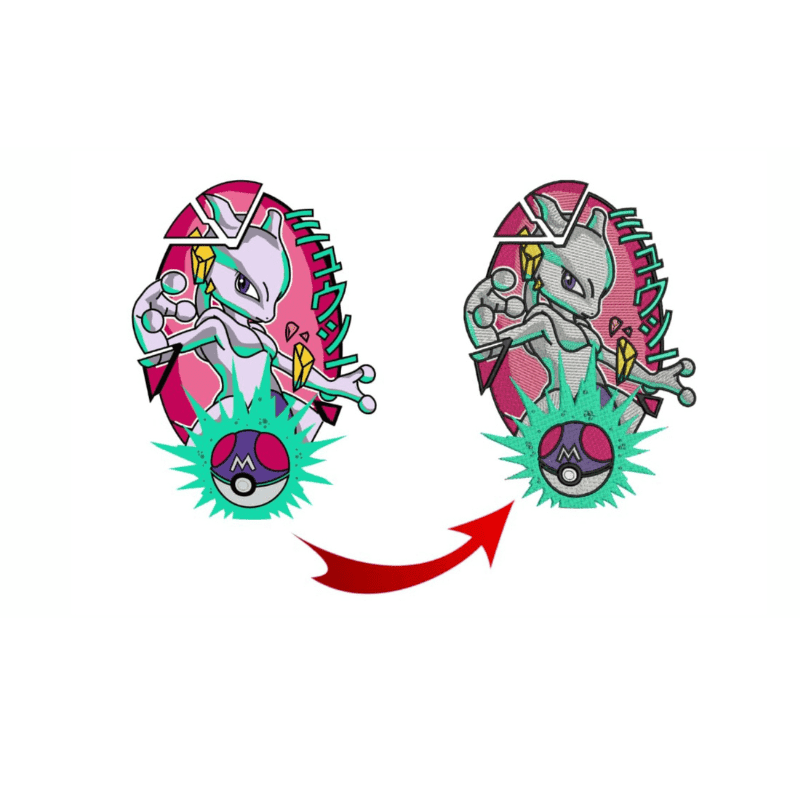Custom Digitizing for Embroidery: Tailored to Your Needs
Custom Digitizing for Embroidery: Tailored to Your Needs
Blog Article
Streamlining the Art of Needlework Digitizing: Step-by-Step Overview
As innovation continues to advancement, the digitization procedure has actually ended up being much more accessible, enabling fanatics to bring their complex layouts to life with simplicity. In this overview, we will certainly decipher the complexities of embroidery digitizing, damaging down each action carefully to enhance the procedure and equip both novices and skilled embroiderers alike.
Comprehending Embroidery Digitizing Software
Needlework digitizing software works as a crucial tool for transforming intricate styles right into electronic layouts suitable with needlework makers, promoting precise sewing and customization. This customized software permits individuals to import various picture file formats, such as JPG or PNG, and convert them right into needlework machine-readable formats like DST, EXP, or PES - Digitizing for Embroidery. By utilizing functions like stitch editing and enhancing, padding alternatives, and thread shade option, digitizing software enables individuals to control every aspect of the style procedure
Furthermore, advanced needlework digitizing software program supplies devices for creating intricate layouts, readjusting stitch density, and incorporating detailed details. Individuals can additionally sneak peek the layout before stitching it out, guaranteeing accuracy and minimizing mistakes. Furthermore, numerous software application offer automatic attributes that help simplify the digitizing process, conserving effort and time.
Understanding the abilities of embroidery digitizing software application is vital for achieving high-grade outcomes in embroidery tasks. By mastering this device, needlework enthusiasts and professionals can release their creativity and bring intricate layouts to life with precision and effectiveness.

Choosing the Right Style Data
After familiarizing on your own with the capacities of needlework digitizing software application, the next important action in the process is choosing the ideal design declare your task. Digitizing for Embroidery. When selecting a style documents for embroidery digitizing, it's necessary to take into consideration the complexity of the style, the dimension of the last product, and the kind of textile you will be working with
For elaborate styles with fine details, a high-resolution picture or vector file is advised to ensure that the embroidery maker can precisely duplicate the layout. Additionally, the size of the end product plays a substantial role in choosing the ideal layout documents. Bigger layouts might require greater resolution files to preserve clarity and intensity.
Furthermore, the kind of material you will be embroidering on affects the option of design data. Different materials might call for changes in the layout documents to make sure that the stitches click for info are effectively aligned and the style looks like meant. By carefully selecting the right design documents based upon these variables, you can set yourself up for a successful embroidery digitizing process.
Digitizing Devices and Methods
Using specialized software program and accuracy techniques, digitizing devices are important in transforming detailed layouts right into embroidery-ready data. Embroidery digitizing software application, such as Wilcom, Hatch, or Embrilliance, offers the required platform to transform art work right into stitch data. These programs provide attributes like stitch editing, rug alternatives, and lettering devices to guarantee the design translates seamlessly onto textile.
Among the essential techniques in digitizing hop over to these guys is developing a clear course for the embroidery machine to comply with. This includes digitizing each element of the layout with precision, figuring out stitch types, densities, and directions. By utilizing devices like digitizing tablet computers or software-specific plugins, embroiderers can achieve a high level of accuracy in their digitized styles.
Furthermore, grasping the art of padding sewing is vital for generating high quality needlework. Underlay sewing stabilizes the fabric and produces a foundation for the design, making sure that the final product is both visually enticing and long-lasting. By comprehending these digitizing tools and methods, embroiderers can raise their craft and bring complex designs to life with accuracy and efficiency.
Customizing Stitch Types and Directions
The option of stitch kinds can substantially impact the general appearance and structure of the stitched style. By strategically combining these stitch types, embroiderers can achieve deepness resource and dimension in their layouts.
Furthermore, the instructions of stitches plays a critical function in boosting the aesthetic appeal of the final needlework. By trying out with different stitch angles and patterns, embroiderers can bring their designs to life with remarkable information and ins and out.
Testing and Refining Your Digitized Design
To ensure the precision and top quality of your digitized style, thorough screening and refinement are necessary steps in the embroidery digitizing procedure. Once you have finished the digitization of your layout, it is essential to check it before proceeding with the real embroidery. Testing allows you to identify any potential concerns such as thread breaks, stitch density troubles, or layout distortions that might influence the outcome.

After testing, it is necessary to refine your digitized design based on the responses from the test sew-out. This might involve tweaking sew settings, adjusting thickness, or making adjustments to the total design to accomplish the wanted outcome. By repeating through screening and refinement, you can tweak your digitized layout to excellence prior to moving ahead with the real needlework procedure.
Verdict
To conclude, grasping the art of embroidery digitizing requires an extensive understanding of the software program, picking the right layout documents, utilizing digitizing devices and methods, personalizing stitch kinds and instructions, and testing and improving the digitized style. By adhering to these steps, embroiderers can streamline the digitizing procedure and create premium stitched layouts with accuracy and performance.
Report this page